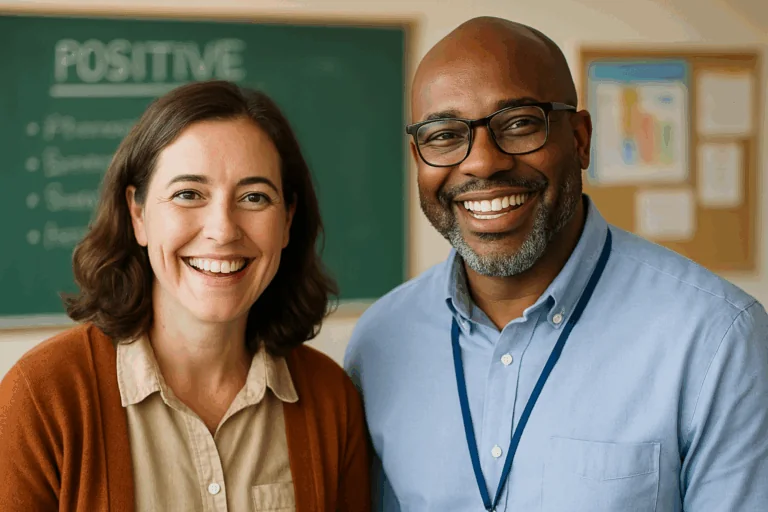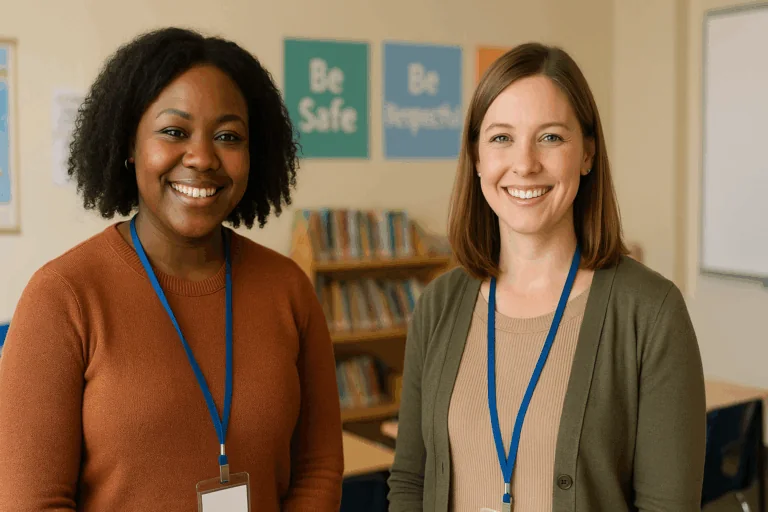At the heart of every educational goal lies a simple but profound mission: to help students become independent, socially responsible, and self-directed individuals. Whether we’re teaching reading comprehension, coping skills, or behavior expectations, we are—at our best—preparing students not just for success in school, but for success in life. Through a behavioral lens, this means clearly defining, teaching, and reinforcing the skills students need to thrive, while gradually reducing unnecessary supports to foster independence. One of the most powerful skills in that process? Self-advocacy.
This article explores how educators can intentionally support the development of self-advocacy IEP goals , outlines common pitfalls that can hinder student growth, and offers practical, behavior-based strategies to promote autonomy, responsibility, and resilience.
Why Independence and Self-Advocacy Matter
In special education, it’s common to respond to a student’s academic or behavioral challenges by increasing adult support. This can be necessary and helpful in the short term, but if we aren’t careful, these supports can morph into long-term dependencies that rob students of the opportunity to learn and grow.
Let’s take two composite examples:
- An elementary student who struggles to regulate behavior is assigned a paraprofessional. Over time, the student becomes reliant on that adult’s presence, unable to follow directions from anyone else or manage without constant support.
- A middle schooler with low motivation receives one-on-one help from a resource teacher. Work gets done, usually through extensive adult scaffolding, but no progress is made in general education classes. The student becomes passive, waiting for someone else to start the task or solve the problem.
In both cases, adult support was provided without a clear plan for fading it out or building the student’s own capacity to succeed independently. The result? Compliance, maybe, but not independence.
Shifting the Focus: Begin With the End in Mind
A behavioral approach to special education encourages us to start with the goal of independence and backward map from there. That means we don’t just ask, “How can we help this student today?” but instead, “What skills does this student need to be successful six months, one year, or five years from now?”
When we define those long-term goals clearly – like initiating tasks, tolerating frustration, requesting help, or navigating peer conflict – we can design supports that move students in that direction.
This shift in mindset leads us to:
- Prioritize skill-building over comfort
- Choose delayed independence over immediate task completion
- Support students through coaching, not caretaking
What Are Self-Advocacy Goals in the IEP?
Self-advocacy is the ability to understand your needs, communicate them clearly, and make decisions that support your well-being and success. For students with IEPs, this includes:
- Knowing what supports and accommodations they have
- Asking for help or clarification when needed
- Expressing preferences and setting goals
- Understanding how their disability impacts learning or behavior
Self-advocacy can and should be explicitly taught, modeled, and measured – just like any academic or behavioral skill. Integrating self-advocacy into the IEP helps students take ownership of their learning and increases the likelihood they will function independently as they progress through school and into adulthood.
If you’re looking for more guidance on IEP development, check out these helpful related resources:
- How to Write Effective IEP Goals
- Free IEP Data Collection Sheet Template
- Understanding SEL Goals for IEPs
Embedding Self-Advocacy Into IEP Goals: Examples
When writing or updating IEPs, consider including self-advocacy as a specific goal or as part of broader behavioral or executive functioning objectives. Here are some SMART goal examples:
- Elementary Level: “Given a non-preferred task, [Student] will appropriately request a break or help using a visual or verbal strategy in 4 out of 5 opportunities.”
- Middle School Level: “When experiencing confusion with an assignment, [Student] will ask a peer or teacher for clarification in 80% of observed opportunities.”
- High School Level: “[Student] will identify and communicate their accommodations to teachers at the start of each semester with 100% accuracy.”
Take a look at our IEP Goal Bank for more ideas!
Core Self-Advocacy Skills for K–12 Students
Here are common self-advocacy skills that K–12 students can be taught, adapted based on their age and developmental level:
- Requesting help or clarification (e.g., asking a teacher to repeat instructions)
- Identifying and expressing preferences (e.g., choosing a seat, topic, or break option)
- Stating when a need isn’t being met (e.g., “I need a break” or “This is too loud for me”)
- Explaining accommodations or IEP supports (e.g., “I have extended time for tests”)
- Reporting problems appropriately (e.g., letting staff know about a peer issue or unsafe situation)These skills can be practiced during class routines, integrated into behavior plans, and monitored through progress tracking systems.

Final Thoughts: Self-Advocacy Is the Path to Lifelong Independence
Self-advocacy IEP goals are not just checkboxes or nice-to-haves—they are essential stepping stones toward lifelong independence. By helping students learn to ask for help, understand their needs, and communicate effectively, we equip them with tools that matter far beyond the classroom.
When we intentionally teach and monitor these skills, we shift from managing student behavior to empowering student ownership. And as students begin to use their voice, reflect on their needs, and make informed decisions, we’ll know we’re not just supporting their education, we’re preparing them for their future.
Let’s teach and goal-scale self-advocacy with the same clarity and consistency we bring to academics and behavior. Each small, meaningful step forward deserves recognition as part of a larger path toward lasting change.
Behavior Advantage can guide you and your team through this process.









